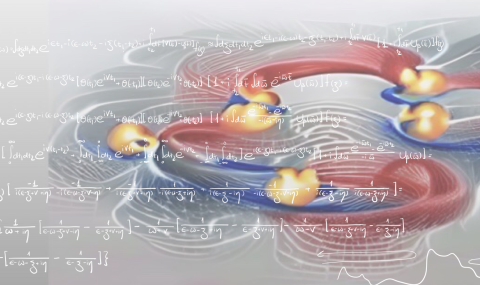Electron transfer through organic molecules is an essential part of basic biological processes such as respiration and photosynthesis. Surprisingly, nature has implemented electron transport in organisms via insulating molecules. While organic molecules typically exhibit a very complex structure, their transport properties are usually characterized by striking universal features. These can be understood using concepts of classic solid-state physics problems: the spin and charge transport properties of quasi-one-dimensional wires. Over the past half-century, studies of electron transfer through organic molecules have been subject to a significant research effort at the confluence of condensed matter physics, organic chemistry, and nano-biology. Recent experiments have challenged earlier theories and sparked numerous new research avenues.
Our work on organic molecules shows that they realize an intriguing aspect of disorder physics that is hard to observe in solids. Moreover, chiral organic molecules (like DNA) exhibit surprisingly rich spin physics, such as efficient spin filtering. Our work helped reveal that these phenomena arise from the combination of curved geometry, spin-orbit coupling, and strong interactions with molecular vibrations. Interestingly, electronic states in such molecules share many features that are sought-after in the context of topological states in nanowires. We are exploring further consequences of the spin physics observed in chiral organic molecules on biological processes and potential applications in spintronic or thermoelectric devices.
Relevant Publications
-
F. Evers, A. Aharony, N. Bar-Gill et. al., Theory of chirality induced spin selectivity: progress and challenges, Adv. Mater. 34, 2106629 (2022).
-
L. Oppenheim, K. Michaeli, Incoherent chiral-induced spin selectivity, arXiv:2112.13561
- K. Michaeli, and R. Naaman, Origin of spin dependent tunneling through chiral molecules, J. Phys. Chem. C 123, 17043 (2019).
-
E. Z. B. Smolinsky, A. Neubauer, A. Kumar, S. Yochlis, E. Capua, R. Carmieli, Y. Paltiel, R. Naaman, and K. Michaeli, Electric field controlled magnetization in GaAs/AlGaAs heterostructures- chiral organic molecules hybrids, J. Phys. Chem. Lett. 10, 1139 (2019).
-
K. Michaeli, D. N. Beratan, D. H. Waldeck, and R. Naaman, Voltage-induced long-range coherent electron transfer through organic molecules, Proc. Natl. Acad. Sci. U.S.A. 116, 5931 (2019).
-
Y. Perlitz, and K. Michaeli, Helical liquid in carbon nanotubes wrapped with DNA molecules, Phys. Rev. B 98, 195405 (2018).
-
K. Michaeli, V. Varade, R. Naaman, and D. H. Waldeck, A new approach towards spintronics--spintronics with no magnets, J. Phys.: Condens. Matter 29, 103002 (2017).
-
K. Michaeli, N. Kantor-Uriel, R. Naaman, and D. H. Waldeck, The electron's spin and molecular chirality -- how are they related and how do they affect life processes?, Chem. Soc. Rev. 45, 6478 (2016).


